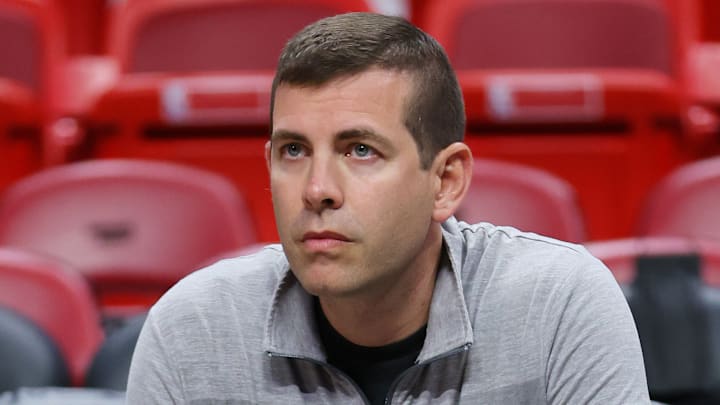Boston Celtics President of Basketball Operations Brad Stevens made a swift pair of moves on Tuesday afternoon. First, he traded newly-acquired forward Georges Niang and two second-round picks to the Utah Jazz in exchange for rookie forward RJ Luis out of St. John's, then signed former Toronto Raptors big man Chris Boucher to a veteran minimum contract.
Compared to some of Stevens’ past masterclasses, these moves can feel a little lackluster, but rest assured, this was a sharp play by the longtime head coach.
The Celtics entered the day just $1.9 million below the league’s second-apron line. They’re now clear of the treacherous threshold by $7.9 million, and sit only $4 million above the first apron.
2025 has been a summer of savings for Stevens and the Cs. Just under two months ago, Boston was projected to spend a total of $540 million in salary and luxury tax. After trading Kristaps Porzingis and Jrue Holiday, letting Luke Kornet and presumably Al Horford walk, and then both of Tuesday’s moves, that number is all the way down to $239 million.
"We've known for a long time that hard decisions were coming," Stevens said last month on the decisions to trade both Holiday and Porzingis. "The second apron is why those trades happened. I think that is pretty obvious. And the basketball penalties associated with those are real. ... So that was part of making the decision to push and put our chips on the table and go for the last two years."
Why is financial relief so important to Stevens and the Celtics?
Diving beneath the second apron was an unavoidable reality. In doing so, the Celtics avoided the following consequences:
- Complete loss of any mid-level exception in free agency.
- Not allowed to aggregate contracts in trades.
- Not allowed to send cash in trades.
- Not allowed to acquire players when they sign-and-trade their own free agents elsewhere.
- Not allowed to trade a first-round pick seven years in the future, and that pick falls to the bottom of the first round if a team is over the second apron at least three times in a five-season span.
That last one is key, considering this would be Boston's third straight year as a second-apron team. With how limited spending is now, considering these restrictions, being able to make the most of draft picks is more key than ever.
There’s probably a fair chance that there’s still a smaller move to come later in the summer, or before the trade deadline, to bring the Cs below the first apron and clear themselves of the following:
- Lose access to the non-taxpayer mid-level exception or bi-annual exception.
- Not allowed to take back more salary in a trade than they send out.
- Not allowed to acquire a player via sign-and-trade.
- Not allowed to sign a player from the buyout market who was earning more than the non-taxpayer mid-level exception ($12.9 million) before getting waived.
- Not allowed to use preexisting trade exceptions.
As tough as it is to have to attach second-round picks to Niang in order to clear salary, this is as good a time as ever to reset the finances. Though the Celtics will likely still be a competitive team this season, they’re going to be nowhere near the level they’ve been at over the past few seasons with Jayson Tatum sidelined with a ruptured Achilles tendon. Lifting the above restrictions now will make it easier to revamp the roster around him when he’s healthy and ready to help the team push for another NBA championship.
If they want to take it step further, Boston can dip beneath the luxury tax by shedding another $12.1 million to get beneath the luxury tax line. It's unclear whether or not they'll do so, but the easiest path there would be trade Anfernee Simons in a similar salary-dump deal.
For now, fans should just be happy the finances are trending in the right direction.
